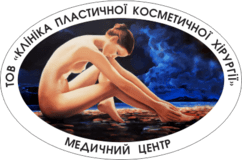Poltava, prospekt Vitaliia Hrytsaienka 9 Weekdays: 8:30-15:00, Weekend: weekend +38 (0532) 56-02-11+38 (095) 688 25 07
Ways to combat swelling after rhinoplasty
 All patients after their rhinoplasties face edemas. Because the skin tissues detachment is carried out, the blood vessels become damaged, that leads to disturbed circulation and temporary disturbed efflux of fluid from the soft tissues. As a result, there is edema in the nose bridge and lateral nasal walls. This phenomenon is a natural reaction of the body, which is not a complicating disorder. The symptom secedes with time, but there are agents which will allow taking out swelling quicker after a rhinoplasty.
All patients after their rhinoplasties face edemas. Because the skin tissues detachment is carried out, the blood vessels become damaged, that leads to disturbed circulation and temporary disturbed efflux of fluid from the soft tissues. As a result, there is edema in the nose bridge and lateral nasal walls. This phenomenon is a natural reaction of the body, which is not a complicating disorder. The symptom secedes with time, but there are agents which will allow taking out swelling quicker after a rhinoplasty.
How long does the edema last after rhinoplasty
The nature of the nose edema after rhinoplasty can be divided into several types: primary, secondary, residual. For each of types there is a certain cause, intensity and duration of the course.
Primary type is shown at the initial stages of the surgery. The surgeon needs to dissect soft tissues in order to get access the osteocartilaginous tissues. As a result of damage of vessels, the liquid starts accumulating in the slabs of tissues. To minimize the symptom, right after the surgical interference, the surgeon applies a plaster bandage and inserts gauze tampons into the patient's nostrils. The patient should be with a plaster cast within 7 days, and then the plaster cast should be discarded.
Secondary edema is much less prominent than the primary one. The dorsum of nose extends and tissue is tightened on the nose tip. At this time there may be difficulty in breathing, because the sinuses are still stuffed up. The duration of the period of secondary swelling is 1-1.5 months.
The residual symptom is almost not visually expressed and is shown only as the nose dorsum tissues concretion. The elimination of this symptom may take about one year. This is what requires a complete recovery of blood vessels.
 Anti-edemic agents after rhinoplasty
Anti-edemic agents after rhinoplasty
Let's consider several methods which will allow reducing swelling. It is worth noting that the listed methods should be used with the doctor prescription only.
Cold compress
It allows to temporarily suscitate the efflux of fluid and blood from the operated area. For compress use a napkin soaked in cold water, or ice cubes, put in a plastic bag and wrapped with gauze or a towel. It is very important to use compresses not on the operated area, but near it. Apply them on the eye area, forehead or lips.
Ointments and creams
 Use special applicators impregnated with Troxevasin ointment or other decongestants. This technique is indicated for reduction the signs of secondary edema. The applicator allows you to apply the agent in doses, without pressing the damaged tissues.
Use special applicators impregnated with Troxevasin ointment or other decongestants. This technique is indicated for reduction the signs of secondary edema. The applicator allows you to apply the agent in doses, without pressing the damaged tissues.
Medical preparations
Plant-extracted medications contribute to the normalization of blood circulation. Please note that they should be applied only by the doctor's prescription.
Bromelain is the pineapple-extracted anti-inflammatory agent. It can be prescribed before surgery as a preventative medication.
Dimexidum is the potent anaesthetic and anti-inflammatory agent. It is for outward application.
Physiotherapeutic procedures
The microcurrents, ultrasound or magnetic field influence can permanently eliminate the swelling appearance. Their use promotes the normalization of blood circulation and the activation of metabolic processes.
General advice:
- To sleep only supine, using a high pillow in order to provide outflow of blood from the operated area;
- To reduce the consumption of salty, sour and spicy food;
- Do not tilt the head until the secondary swelling disappears;
- To refuse physical activities;
- To exclude smoking;
- Do not drink alcoholic and carbonated drinks.
The adherence of all the medical advices will allow you to get the desired result after the rhinoplasty and will allow significantly reduce the symptoms during the rehabilitation period.
specialists of the Clinic for Plastic Surgery
13-07-2017
Similar news
